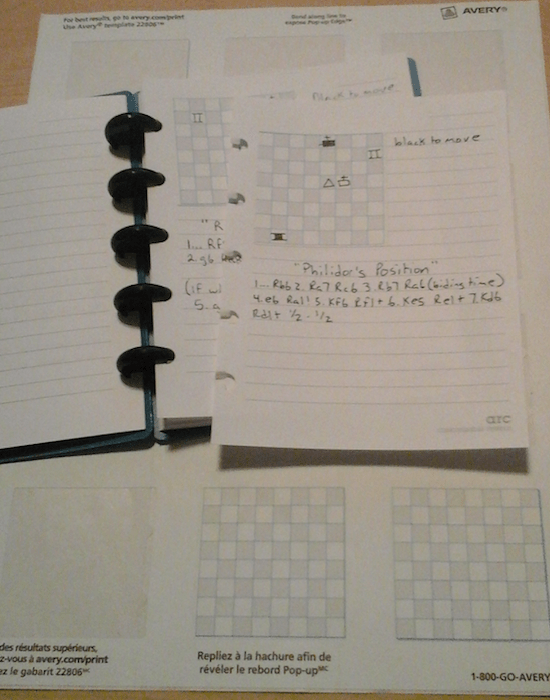
Chess Notebook, Part 2
I graduated from college with dozens of notebooks floating in my wake. In my professional career I've always attended meetings with a bound notebook in hand. The process of writing notes helps me process and integrate information. So, it was natural that I adopted the same approach when I decided to take a serious stab at chess improvement.
In my first Chess Notebook blog post I described the way I use my bound notebook for taking traditional, chronological notes on whatever chess book or subject I am currently studying. I also included a description of the adhesive labels and chess notation I use to make it neat and easy to illustrate chess positions.
Tonight I'd like to describe the second type of chess notebook I maintain. I used the word "maintain" because, unlike the bound notebook mentioned above, this one is looseleaf. This enables me to add and remove pages, or entire sections, as my needs change, allowing me to cultivate and grow the notebook over time.
The purpose of my looseleaf notebook is to collect and categorize different positions that I think are interesting or useful to remember at this point in my chess career.
Here is what it looks like.

- R+P vs R
- K+P vs K
- Rook Lifts
- Rooks on Open Files
- Bxh7(2)
- Outside Passed Pawn
- Discovered Attack (piece)
- Discovered Attack (pawn)
- Discovered Check
- Double Check
- Forks (pieces)
- Forks (pawns)
- Absolute Pin
- Relative Pin
- Skewer
- Stalemate
- Perpetual Check
- Destroying King's Cover
- Backrank Mate
- Deflection (oveworked piece)
- Battery on Open File/Diagonal
- Underpromotion
- Decoy (sacrifice and non-sac)
- Clearance Sacrifice
- X-Ray
- Windmill
- Zwischenzug (quiet move)
- Fortress
- IQP (advancing d pawn)
- Minority Attack
- Attacking Finachetto
